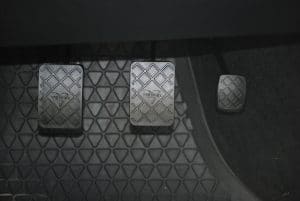
Car accidents are an unfortunate fact of life for drivers. According to the National Highway Safety Traffic Administration (or “NHTSA”), 32,675 people died in motor vehicle accidents in 2014. To further reduce those numbers, NHTSA announced a joint effort with most major car companies to implement automatic emergency braking (or “AEB”) systems in all American cars by 2022.
What are AEBs?
AEBs use a combination of lasers, cameras and sensors to detect and respond to threats on the road. If the system calculates that a driver fails to adequately respond to a stopped car or object, the AEB takes control and applies the brakes. Most car companies already use simplified versions of AEBs on their luxury car brands. NHTSA is seeking to turn the AEB into an industry standard by 2022. It is believed that this system will save thousands of lives once it is fully rolled out.
Who is involved?
The pledge includes luxury car brands like Tesla, Maserati, Porsche and Mercedes-Benz and economy manufacturers like Honda, Toyota and Volkswagen. It includes American stalwarts General Motors and Ford and German behemoths, like BMW and Volvo. In total 20 car companies have taken the pledge, which combined control 99% of the American car market.
What is the effect?
It is estimated that this pledge will effect market-wide change three years earlier than traditional regulatory methods. It is estimated that those extra three years will prevent 28,000 crashes and 12,000 injuries. According to the Insurance Institute for Highway Safety (or “IIHS”), once AEB become widespread, insurance companies will offer lower rates for AEB-equipped vehicles.
How will it be enforced?
This is a voluntary pledge, there is no enforcement mechanism. Several organizations, including Consumer Reports and the IIHS, have volunteered to monitor the progress. The hope is that public shaming and reporting will cajole the car companies into keeping to their implementation schedules
Technology continues to advance at a dizzying pace. Automatic brakes are one more example of the “driverless” car movement. These new technologies will introduce a whole host of new legal questions such as, if the AEB system fails who is liable? Does the driver retain ultimate liability? Or is this is a defective product issue? The law is continually playing catch-up as progress continues marching forward.



